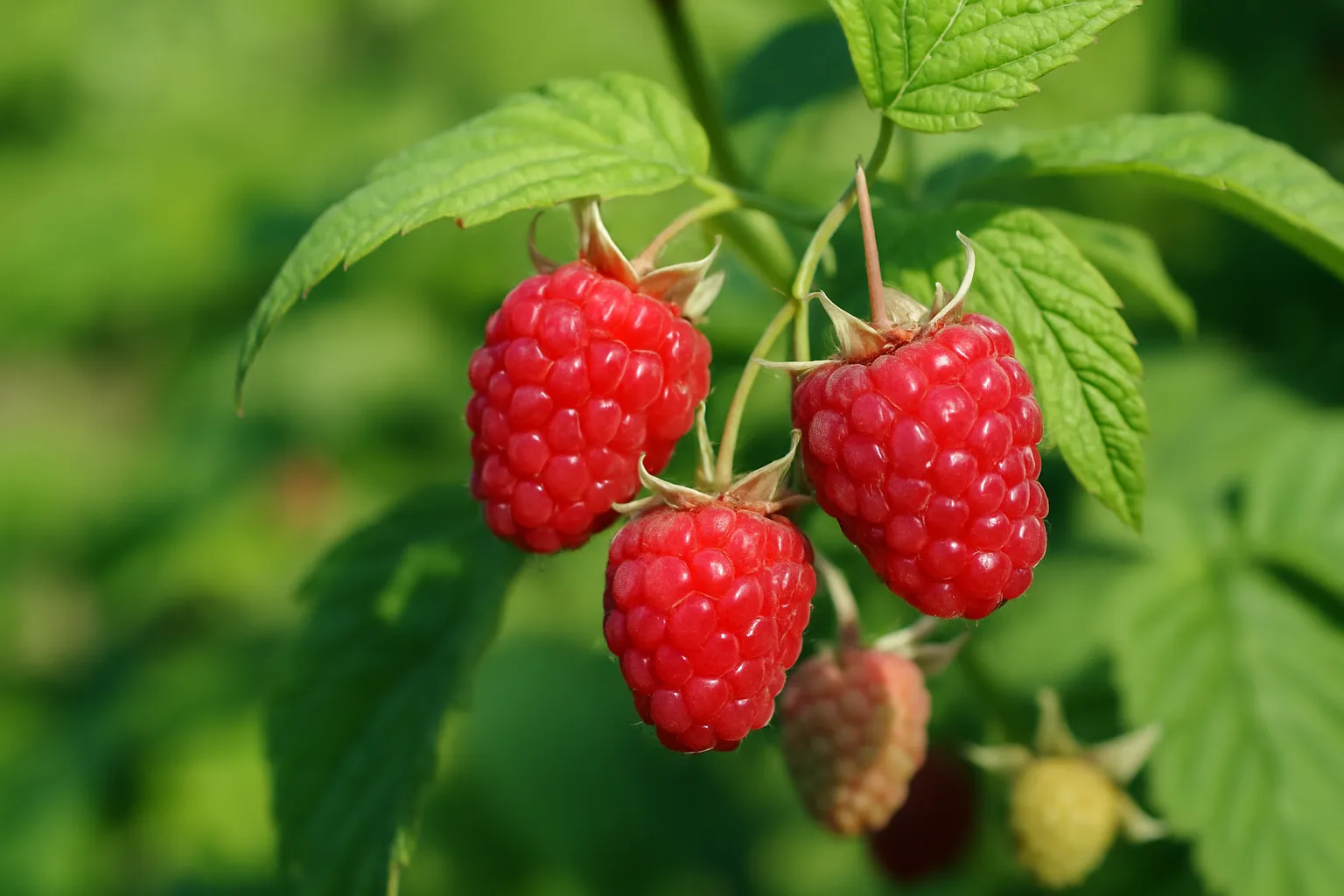Raspberry Growing Tips for Beginners: From Planting to Harvest
Learn how to grow raspberries successfully with this beginner’s guide. Discover the best varieties, soil preparation, pruning tips, and pest management for a fruitful harvest.

Raspberries are among the most rewarding fruits to grow in your garden. They not only offer delicious, sweet-tart berries but also come back year after year with the right care. Whether you have a large garden or a small backyard, raspberries can easily become a staple fruit in your homegrown produce. This comprehensive guide will help beginners learn how to grow healthy and productive raspberry plants, from choosing the right varieties to harvesting plump berries.
1. Choosing the Right Raspberry Variety
Before planting, it’s important to select a raspberry variety that suits your climate and soil. There are two main types of raspberries:
- Summer-bearing raspberries: These varieties produce one large crop in early to midsummer. They are perfect for gardeners who prefer one big harvest season.
- Ever-bearing (or fall-bearing) raspberries: These produce two smaller crops — one in summer and another in fall — extending your harvest period.
Popular varieties for beginners include Heritage, Autumn Bliss, and Caroline. They are known for their resilience and rich flavor.
2. Selecting the Ideal Planting Site
Raspberries thrive in full sunlight and well-drained soil. The ideal spot should receive at least six hours of direct sun daily. Avoid planting raspberries where tomatoes, potatoes, or peppers have grown recently, as they can spread soil-borne diseases like verticillium wilt.
Ensure good air circulation around the plants to minimize fungal problems. If your garden has heavy clay soil, consider planting raspberries in raised beds or containers to improve drainage.
3. Preparing the Soil
Healthy soil is key to growing vigorous raspberry plants. Begin by testing your soil’s pH — raspberries prefer slightly acidic soil between pH 5.5 and 6.5. If the pH is too high, amend it with sulfur; if it’s too low, use lime.
Work in plenty of organic matter like compost or well-rotted manure before planting. This will enhance soil fertility and texture. Avoid adding fresh manure as it can burn the delicate roots of new plants.
4. Planting Raspberries
The best time to plant raspberries is in early spring, as soon as the soil can be worked. Space the canes about 18 to 24 inches apart, with rows 6 feet apart to allow for air flow and easy harvesting.
- Dig holes deep enough to accommodate the root system without crowding.
- Set the plants slightly deeper than they were in their nursery containers.
- Fill in with soil, gently firming it around the roots, and water thoroughly.
After planting, apply a thick layer of mulch (straw, wood chips, or shredded leaves) around the base to retain moisture and suppress weeds.
5. Watering and Fertilizing
Raspberries need consistent moisture, especially during the growing season. Water deeply once or twice a week, ensuring the soil remains moist but not waterlogged. Drip irrigation or a soaker hose is ideal, as it keeps the foliage dry and reduces the risk of fungal disease.
In early spring, apply a balanced fertilizer (10-10-10) to encourage strong growth. Avoid over-fertilizing, which can cause excessive leafy growth at the expense of fruit production.
6. Pruning for Healthy Growth
Pruning is essential for maintaining healthy and productive raspberry bushes. The method depends on the type of raspberry you are growing:
- Summer-bearing raspberries: After harvesting, cut down the canes that produced fruit to ground level. Leave new green canes, which will produce next year’s crop.
- Ever-bearing raspberries: You can cut back all canes in late winter for a single large fall crop or prune selectively for two harvests per year.
Regular pruning improves air circulation and helps prevent diseases like cane blight or powdery mildew.
7. Supporting the Canes
As raspberry canes grow tall and heavy with fruit, they may need support. Install a simple trellis or wire system:
- Place sturdy posts at the ends of each row.
- Stretch two or three horizontal wires between the posts at heights of 2, 3, and 4 feet.
- Tie the canes loosely to the wires using soft twine or plant ties.
This structure helps keep the canes upright, promotes better sunlight exposure, and makes harvesting easier.
8. Managing Pests and Diseases
Raspberries are relatively hardy, but they can still attract pests and diseases. Keep an eye out for common issues like:
- Raspberry beetle: Causes small grubs inside the fruit. Remove affected berries and use insect barriers if needed.
- Aphids: These pests can transmit viruses. Spray plants with insecticidal soap or neem oil.
- Cane blight and root rot: Avoid overwatering and ensure good drainage to reduce fungal risks.
Maintaining cleanliness in the raspberry patch — removing old debris and pruning diseased canes — will significantly minimize problems.
9. Harvesting Raspberries
Raspberries are ready for harvest when they come off the stem easily and have a deep, vibrant color. Avoid pulling or forcing them, as ripe berries should slide off with a gentle tug.
Pick berries every couple of days during the harvest period to prevent overripe fruit from attracting pests. Fresh raspberries are delicate, so handle them gently and store them in shallow containers to avoid crushing.
10. Post-Harvest Care and Winter Protection
After harvest, clean up the raspberry bed by removing old canes and weeds. In colder regions, apply a thick mulch layer to protect the roots from freezing temperatures. This will ensure strong regrowth in the following spring.
Final Thoughts
Growing raspberries may seem challenging at first, but with the right care and attention, they will reward you with years of abundant harvests. Start small, stay consistent with maintenance, and soon you’ll be enjoying bowls of sweet, homegrown raspberries straight from your garden.
With these beginner-friendly tips, anyone can turn a corner of their garden into a thriving raspberry patch. Remember, patience and consistency are key — and the results are always worth it.


